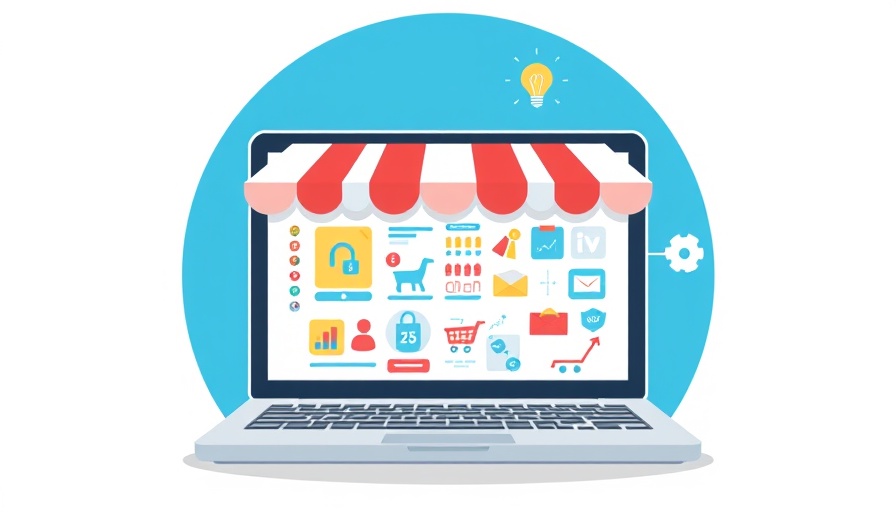
The Evolving Landscape of Online Shopping
In today's fast-paced digital age, the world of online shopping is evolving at unprecedented speed. As consumer expectations shift due to the convenience of digital platforms, pricing intricacies, and the rise of technological advancements, it is essential for brands to understand these transformations. The convergence of these factors presents ripe opportunities for marketers and business owners to capture and engage consumers like never before.
Brand Loyalty: An Opportunity for Newport Strategies
Interestingly, brand loyalty is diminishing, presenting new growth avenues for emerging businesses. Recent studies reveal that 70% of consumers are willing to venture into new brand territory for their everyday purchases. This willingness stems from a growing comfort with assessing options that promise better prices and enhanced online experiences. Notably, 60% of shoppers reported they had purchased private-label products in the past year, signaling a shift toward more cost-effective alternatives.
For new brands, this erosion of habitual loyalty can be a double-edge sword; while loyal consumers may wane, it also provides a vital opportunity to attract new customers. Those who can establish trust quickly through compelling value propositions—perhaps through quality, affordability, or customer engagement—stand to benefit immensely.
Convenience Reigns: The Power of Home Delivery
In the hierarchy of consumer needs, convenience remains paramount. Recent insights show that a staggering 76% of online shoppers prioritize convenience in their shopping habits. Among these convenience drivers, home delivery is paramount, with 55% of consumers citing it as their primary reason for choosing online shopping over brick-and-mortar stores. Yet, it is crucial to note that delivery alone does not suffice. Customer expectations extend to free shipping (83% of consumers), secure payment methods (65%), and straightforward return processes (64%). Brands must meet these evolving standards, blending convenience with a seamless shopping experience.
The Rise of the Monthly E-Shopper
Another revealing trend is the frequency with which consumers engage in online shopping. Today, 30% of Americans report shopping online at least once per month, with 21% engaging in two to three purchases monthly. This trend indicates that online shopping is becoming the norm, permeating various demographics and prompting businesses to ensure consistent user experiences and fulfillment processes. With so many consumers shopping regularly, reliable and performance-driven digital interfaces are not merely enhancements but necessities for survival in e-commerce.
Timing and Momentum: Capitalizing on Seasonal Peaks
November is a pivotal month for retailers, as shopping events like Black Friday bring about sales peaks. With marketing saturation expected, savvy business owners can use data analytics to plan for timing to optimize product offerings and promotional strategies. By understanding seasonal consumer behaviors, brands can align inventory with demand fluctuations, helping to attract and retain customers with enticing deals and timely outreach.
Diverse Perspectives on Consumer Trends
While the trends in online shopping behavior appear straightforward, it is crucial to consider diverse perspectives. Some critics argue that the shift towards brand exploration and decreased loyalty may not be universally experienced across all demographics. Brands targeting niche markets may still benefit from strong loyalty if they position themselves as superior in quality or craftsmanship. Therefore, it's essential for marketers to evaluate their specific audiences while adopting broader trends in engagement.
Actionable Strategies for Business Growth
In light of these insights, business owners must hone their strategies to align with the evolving landscape of consumer behavior. Here’s what to consider:
- Enhance Trust: Build relationships through transparent practices, quality assurance, and responsive customer service.
- Prioritize Convenience: Optimize your logistics for home delivery while integrating user-friendly online interfaces.
- Leverage Data: Analyze purchasing trends closely to adapt inventory and marketing strategies seasonally.
Conclusion
The dynamics of online shopping compel brands to evolve their strategies continually. By embracing these insights into consumer behavior and adapting operations accordingly, businesses can not only survive but thrive in today's competitive marketplace. It’s time to reassess your engagement tactics and ensure they resonate with the new breed of online shopper.
As brands adapt to these consumer-centric behaviors and preferences, they can create long-lasting relationships that will foster brand loyalty and repeat purchases. Take proactive steps today to refine your approach and align with what today’s consumers demand—after all, understanding them is your pathway to sustainable growth.
 Add Row
Add Row  Add
Add 




Write A Comment